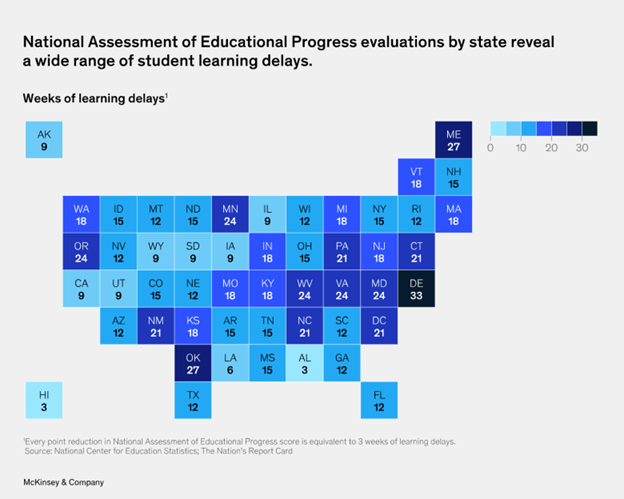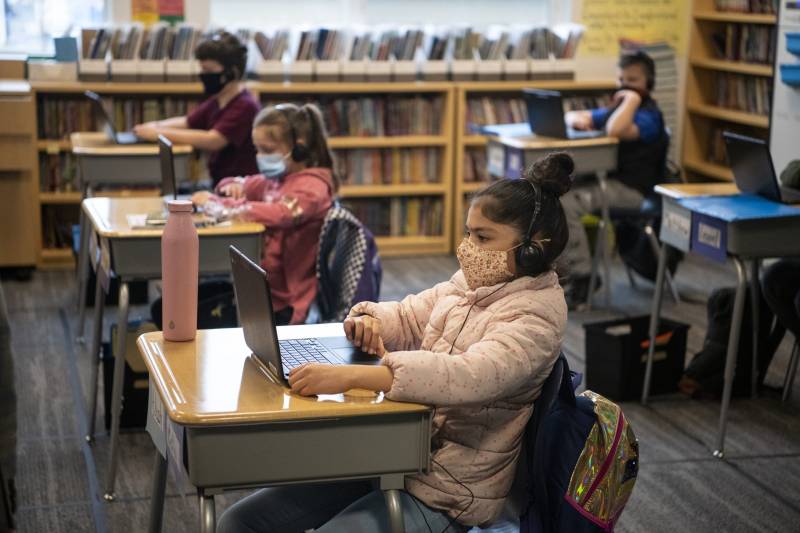Why is it that some states, like Alabama, have more than $1,000 to spend on each student for each week of pandemic learning loss, and other states, such as Massachusetts, have only $165?
The answer, according to a January 2023 report by the consulting firm McKinsey & Company, is that $122 billion in federal pandemic recovery money has been allocated to schools based on the percentages of children from low-income families even though there’s not a tight correlation between the level of academic disruption and poverty. In some states, students are only six weeks behind where they were before the pandemic. In other states, children are almost a year behind. But the amount of catch-up money each state gets doesn’t reflect this disparity.
Understanding why pandemic learning loss varies so much around the nation is admittedly a “head scratcher,” said Emma Dorn, a co-author of the McKinsey report. Some states that resumed in-person schooling quickly, such as Florida, are behind states that relied more on remote schooling, such as Illinois. Minnesota, historically one of the higher performing states in the nation (it ranked first in fourth grade math in 2019) is now one of the furthest behind its pre-pandemic achievement levels with 24 weeks of learning loss. Meanwhile, students in Alabama, which ranked 50th in fourth grade math before the pandemic, are only three weeks off of their 2019 achievement level.

“It’s not the chart you’re used to seeing,” said Dorn. “When you look at the leading U.S. states in education, everything is kind of a little bit upside down. Many of the states who are historically really strong performers have really suffered in the pandemic.”
Time spent in remote learning, Dorn said, is only part of the puzzle. Remote learning itself varied wildly. Some schools set up effective Zoom instruction within days while others struggled for months to distribute computers. Even among schools that resumed in-person learning quickly, strict quarantine policies often sent students and teachers back home again. Other communities allowed classmates to remain in school. Many families chose not to send their kids back into school buildings even when the option was available. Finally, absenteeism has doubled and many students haven’t been in school regularly. All of these factors led to different learning outcomes.


